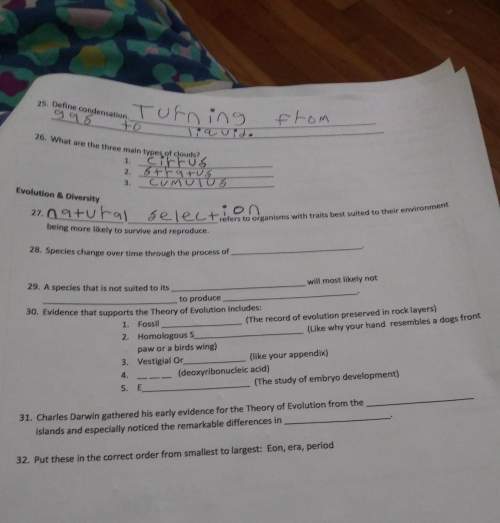
Physics, 28.06.2019 14:30, bella122805
Astone is thrown vertically upwards with a speed of 30.0 m/s. (a) what's its speed when it reaches 20.0 meters? (b) what is the maximum height?

Answers: 1
Other questions on the subject: Physics

Physics, 22.06.2019 09:00, bendmads04
In a heat engine if 1000 j of heat enters the system the piston does 500 j of work, what is the final internal energy of the system if the initial energy was 2000 j? 1. write the equation 2.list out your known variables 3.plug the numbers into the equations 4.solve 5.write your solution statement that includes initial energy and final
Answers: 1

Physics, 22.06.2019 23:00, hannah1072
Imagine an isolated positive point charge q (many times larger than the charge on a single proton). there is a charged particle a (whose charge is much smaller than charge q) at a distance from the point charge q. on which of the following quantities does the magnitude of the electric field created by charge q at particle a's position depend? check all that apply. the type of the charge on the charged particle athe relative orientation between q and a (while the distance between q and a is fixed)the specific location of the charged particle a (while the distance between q and a is fixed)the amount of the charge on the point charge qthe specific location of the point charge q (while the distance between q and a is fixed)the distance between the point charge q and the charged particle athe amount of the charge on the charged particle a
Answers: 3

Physics, 23.06.2019 00:00, supermkimbrel
A15,000 kg rocket traveling at +230 m/s turns on its engines. over a 6.0 s period it burns 1,000 kg of fuel. an observer on the ground measures the velocity of the expelled gases to be −1,200 m/s.
Answers: 3

Physics, 23.06.2019 01:00, exoticbunnylover123
Learning goal: to understand newton's 1st law. newton's principia states this first law of motion: an object subject to no net force maintains its state of motion, either at rest or at constant speed in a right line. this law may be restated as follows: if the sum of all forces acting on an object is zero, then the acceleration of that object is zero. mathematically this is just a special case of the 2nd law of motion, f⃗ =ma⃗ , when f⃗ =0. when studying newtonian mechanics, it is best to remember the 1st law in two ways: if the net force (i. e., sum of all forces) acting on an object is zero, the object will keep moving with constant velocity (which may be zero). if an object is moving with constant velocity, that is, with zero acceleration, then the net force acting on that object must be zero. complete the following sentences to see if you can apply these ideas. part a if a car is moving to the left with constant velocity, one can conclude that
Answers: 1
Do you know the correct answer?
Astone is thrown vertically upwards with a speed of 30.0 m/s. (a) what's its speed when it reaches 2...
Questions in other subjects:

Mathematics, 04.08.2019 21:00

Mathematics, 04.08.2019 21:00

History, 04.08.2019 21:00

English, 04.08.2019 21:00

History, 04.08.2019 21:00


Biology, 04.08.2019 21:00



English, 04.08.2019 21:00








